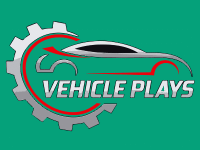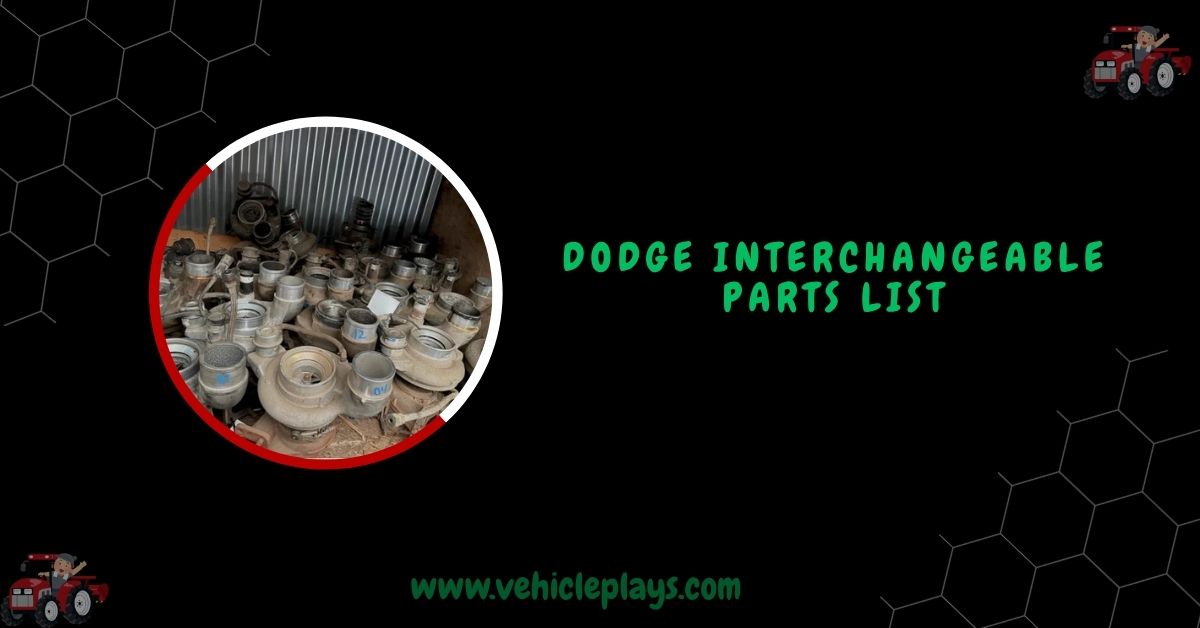Understanding which parts are interchangeable across Dodge vehicles can save time, money, and effort for owners, mechanics, and enthusiasts alike.
Discover interchangeable Dodge parts for Ram, Power Wagon, and more using Pull-A-Part’s free tool or cross-reference databases. Find compatible parts across models and years to save time and money.
This article explores the concept of interchangeable parts for Dodge vehicles, drawing on insights from various sources, including online forums, parts catalogues, and automotive databases.
What Are Interchangeable Parts?
Interchangeable parts refer to components that can be used across different vehicle makes, models, or years without significant modifications.
For Dodge vehicles, this concept is particularly relevant due to the brand’s long history of producing a wide range of models, from the iconic Dodge Charger to the rugged Ram trucks and the high-performance Viper.
Interchangeability can apply to body parts, mechanical components, or interior features, but compatibility depends on factors like model year, generation, and specific configurations such as cab size or engine type.
The ability to swap parts can be a game-changer for repairs or restorations, especially for older vehicles where original parts may be scarce.
However, determining interchangeability requires careful research, as even minor differences in design can affect fitment.
For example, a part that fits a Dodge Ram 1500 may not work on a Ram 2500, even within the same model year, due to variations in suspension or body design.
Why Interchangeable Parts Matter for Dodge Owners
Dodge has a storied history dating back to 1914, with vehicles known for their durability, performance, and iconic designs.
Models like the Dodge Challenger, Charger, Durango, and Ram trucks have evolved through multiple generations, each with distinct engineering.
Over time, Dodge has shared platforms and components with other Chrysler brands, such as Jeep and Plymouth, which increases the potential for interchangeable parts.
Using interchangeable parts offers several benefits:
- Cost Savings: Sourcing parts from a more readily available model or year can be cheaper than buying rare, model-specific components.
- Availability: For older models like the Dodge Power Wagon or first-generation Dakota, finding exact parts can be challenging. Interchangeable parts from related vehicles can fill the gap.
- Customization: Enthusiasts often use interchangeable parts to upgrade or modify their vehicles, such as swapping in a more powerful engine or modern interior components.
However, there are challenges. Without proper documentation, identifying compatible parts can be time-consuming. Some parts may require modifications to fit, and using non-OEM (original equipment manufacturer) parts can affect performance or authenticity.
Key Resources for Finding Interchangeable Dodge Parts
Several resources can help Dodge owners identify interchangeable parts:
- Hollander Interchange Manual: This industry-standard guide catalogs parts compatibility across vehicle makes and models. It’s widely used by salvage yards and mechanics but may require access through a subscription or a professional contact.
- Online Parts Databases: Websites like Pull-A-Part offer free tools to cross-reference parts between vehicles. By entering your Dodge’s year, make, and model, you can find compatible components from other vehicles.
- OEM Parts Catalogs: Retailers like MoparPartsGiant.com provide comprehensive catalogs of genuine Dodge parts, often including compatibility details for specific models. These are ideal for ensuring authenticity but may come at a higher cost.
- Automotive Forums: Communities like DodgeForum.com and RamForum.com are treasure troves of user-generated knowledge. Enthusiasts and mechanics share real-world experiences about which parts interchange across Dodge models.
- Salvage Yard Databases: Sites like Car-Part.com allow you to search for parts across salvage yards, often indicating which years or models are compatible with your vehicle.
Interchangeable Parts Across Dodge Models
Dodge vehicles are grouped into generations, which often share platforms and components. Below are examples of interchangeable parts for popular Dodge models, based on available information.
Dodge Ram (1974–Present)
The Dodge Ram, now simply branded as Ram, has gone through multiple generations, each with varying degrees of parts interchangeability:
- First Generation (1974–1993): Body parts and running gear (e.g., axles, suspension) remained largely consistent during this period. For example, body panels from a 1974 Ram may fit a 1993 model with minimal modifications. However, wheels from second-generation Rams (1994–2001) may fit but could cause rubbing due to changes in tire size and bolt patterns.
- Second Generation (1994–2001): Body parts like doors are specific to cab types (regular, club, or quad cab). Front doors from a 2002 Ram 2500 quad cab, for instance, won’t fit a regular cab due to design differences. Tailgates, however, may be interchangeable across 1500 and 2500 models within the same generation.
- Third Generation (2002–2008): This generation introduced a new frame, suspension, and powertrain, reducing interchangeability with earlier models. However, some interior components, like seats, may fit across second- and third-generation Rams with modifications.
Dodge Dakota (1987–2011)
The Dakota, a mid-size pickup, shares some components with other Chrysler vehicles:
- First Generation (1987–1996): Drivetrain parts, such as those for the 5.2L Magnum V8, may be compatible with same-year Jeep models, though differences in gearing or mounting points can complicate swaps. Body parts are less likely to interchange with other models due to the Dakota’s unique design.
- Second Generation (1997–2004): Some suspension and engine components may be shared with the Dodge Durango, which was built on a similar platform. Always verify fitment, as variations in 4×4 versus 2WD configurations can affect compatibility.
Dodge Power Wagon (1940–1978)
The Dodge Power Wagon, a classic off-road truck, has a detailed interchangeability guide available online. This document covers parts from 1940 to 1978, including:
- Front and Rear Axles: Many axle components are shared across model years, though gear ratios and locking mechanisms may differ.
- Brakes and Clutch: Brake drums and clutch assemblies from certain years can be swapped, but modifications may be needed for newer systems.
- Cooling and Electrical: Radiators and alternators from related Dodge trucks (e.g., W100, W200) may fit with minor adjustments.
Dodge Aries and Related Models (1981–1989)
For K-car-based models like the Dodge Aries, body parts are often specific to the model and year.
For example, a 1988 Aries LE’s fender or bumper won’t interchange with a Chrysler LeBaron or Plymouth Reliant due to styling differences.
However, mechanical components like engines or transmissions may be compatible across K-car platforms. Checking a Chrysler parts manual or Hollander manual is recommended for precise fitment.
Tips for Using Interchangeable Parts
- Verify Fitment: Always confirm compatibility using a parts database or manual. Even within the same model, differences in trim, engine, or drivetrain can affect fitment.
- Check Generations: Dodge models are divided into generations (e.g., Ram second generation: 1994–2001). Parts are more likely to interchange within the same generation.
- Consider Modifications: Some parts may require minor adjustments, such as drilling new mounting holes or swapping connectors, to fit properly.
- OEM vs. Aftermarket: OEM parts from Mopar ensure authenticity but are pricier. Aftermarket parts, available from retailers like PartsGeek, offer cost savings but may vary in quality.
- Consult Experts: Forums and salvage yards often have knowledgeable staff or members who can confirm interchangeability based on real-world experience.
Challenges and Limitations
While interchangeable parts offer flexibility, there are limitations:
- Design Changes: Even within the same generation, Dodge made frequent updates to body styles, suspension, and electronics, reducing compatibility.
- Cab and Trim Variations: Parts for regular, extended, or quad cabs often differ, as seen with Ram doors and tailgates.
- Condition of Used Parts: Salvage yard parts, while cost-effective, may not be in good condition, requiring inspection before purchase.
- Accuracy of Information: Older interchange lists, like those covering 1974–2009 vehicles, may rely on memory or incomplete data, so cross-checking is essential.
FAQs
What year do Dodge Ram 1500 parts are interchangeable?
Dodge Ram 1500 parts often swap within generations: 1994–2001, 2002–2008, 2009–2018. Check specific parts like beds or doors for fitment.
What year to stay away from a Dodge Ram 1500?
Avoid 2003 and 2014 Ram 1500s due to reported engine and transmission issues. Always check vehicle history before buying.
What brand are Dodge OEM parts?
Dodge OEM parts are branded Mopar, the official parts supplier for Dodge, Ram, and other Chrysler vehicles.
Are all Ram 1500s the same size?
No, Ram 1500 sizes vary by cab and bed length. Compare wheelbase and bed dimensions for specific models.
What years will interchange with a 2010 Dodge Ram 1500?
Parts from 2009–2018 Ram 1500s may fit a 2010, especially body parts and seats, but verify compatibility.
What year did Ram 1500 change body style?
Major Ram 1500 body style changes happened in 1994, 2002, 2009, and 2019, with a refresh in 2025.
Conclusion
Interchangeable parts are a lifeline for Dodge owners, especially those working on older or rare models. By leveraging resources like online databases, OEM catalogs, and enthusiast forums, you can identify compatible parts to keep your Dodge running smoothly or restore it to its former glory. Always verify fitment, consider the trade-offs between OEM and aftermarket parts, and tap into the knowledge of the Dodge community. Whether you’re repairing a 2002 Ram 2500, restoring a 1970s Power Wagon, or upgrading a modern Challenger, understanding parts interchangeability empowers you to make informed decisions and maintain the legacy of Dodge’s iconic vehicles.

